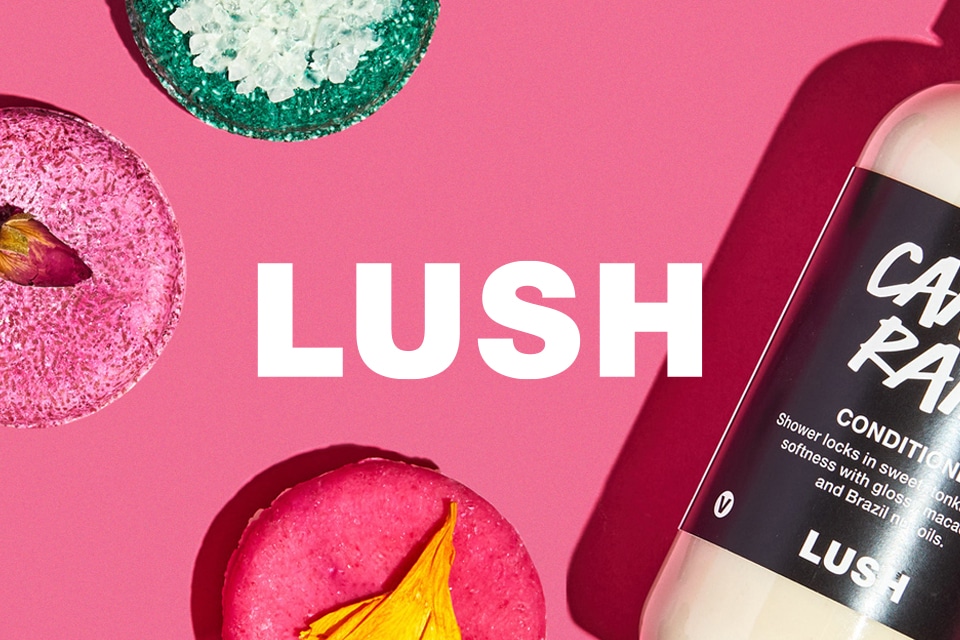4 Proven Ways to Differentiate Your Brand From Competitors

What is brand differentiation?
Brand differentiation results from showing how your business differs from the competition.

Even if your business idea is revolutionary and creates a new market, the competition will come knocking before long.
And smart competitors will use every resource at their disposal to squeeze your margins and your market share.
The reality is that most businesses offer similar products or services. Search on Amazon for wireless phone chargers, and you’ll see hundreds of nearly identical, low-priced products.
How can your business stand out and differentiate from competitors?
Four proven ways to differentiate your brand

Many business owners and marketers don’t understand how to differentiate. They try to please too many audiences and do too many things.
But, this do-everything strategy muddies your brand identity, isn’t sustainable, and isn’t effective. Teresa Slider of Hinge Marketing explains:
The more laser-focused your differentiators and positioning are, the easier it will be to gain visibility and credibility in your crowded marketplace. By not being everything to everyone and demonstrating what makes your firm truly unique, you also have the ability to be seen as the leading expert in your particular area of specialization.
Differentiation in your branding builds credibility and generates customer loyalty – which, in turn, drives growth.
When done right, brand differentiation:
- makes it easier for a customer to choose between close alternatives.
- helps people justify paying a premium price for an elevated brand.
- allows customers to rationalize their purchases more easily.
For differentiation to be effective, it must do the following:
- It must be relevant to clients and prospective clients. If the differentiator does not impact clients and prospects, it will not impact your business.
- It must be rooted in truth. You can’t just say your business is different; it needs to be different.
- It must be verifiable. The differences you provide must be provable and achievable every time.
Let’s look at four proven ways to create a brand strategy and differentiate your business from competitors.
1. Strong business name
When William Shakespeare asked, “What’s in a name?” he wasn’t thinking about brand identity.
But if you’re a business owner working to build a successful brand, you should be.
Your business name is the cornerstone of your brand identity. Choosing the right name for your business can be one of the most crucial parts of building a strong brand.
To avoid any common naming mistakes, take the time you need to choose the perfect business name.
Random, generic, forgettable business names, such as those you get from an online business name generator, will make it harder for your customers to fall in love with your unique company. There are some reasonably good ones, like this free business name generator. But you’ll always be better off working with business naming experts to get a memorable business name.
When selecting a brand name that can differentiate your business from others, consider the following:
- Who are you? Your company name should identify the who of your business, service, or product.
- Can the company name be shortened? Keep it short and sweet when possible.
- Is the company name memorable? If a client can’t remember your name, you’ve already missed the mark.
- Is the company name manageable? Consider ease in spelling, pronunciation, and abbreviation.
- Is the company name free from negative connotations and misrepresentations? When considering your company name, especially if your goal is to become a global brand, ensure that the name isn’t associated with negative connotations across all borders.
When done correctly, name differentiation can capture your audiences’ attention and hearts.
Company spotlight: LUSH
The beauty industry is projected to be worth 758 billion dollars by 2025. It can be difficult to stand out in a market that size.
But LUSH is crushing it with brand differentiation.
LUSH’s brand champions premium-quality beauty products that are simple, fresh, and no fuss.
And the name “LUSH” meets all the parameters for a great business name – it’s short, memorable, evocative of the brand, and easy to spell and pronounce.
And that helps them to stand out in their very competitive marketplace.

2. Compelling visual identity
A strong brand identity doesn’t just happen by chance.
To stand out from your competition, you must approach your brand identity design strategically.
Strong brand identity design attracts clients by showcasing how and why your business or its products or services are better than competitors. This can be due to a superior quality product, unique features, or simply because people love your business for other reasons.
The important thing is that you know what your differentiating factors are – and that you communicate them visually to your prospective customers.
Brand identity is made up of many visual components. The following three are the most important:
- Company logo: A well-designed company logo is one of the first impressions your business will make. Invest the time to get this right. Your logo should be easily recognizable, versatile, and timeless. But, most importantly, it must embody your brand.
- Fonts: Fonts impact people psychologically. Any differentiation strategy should include choosing fonts that send the right message about your unique brand. Select easy-to-read fonts that communicate something about your business’s identity, and are visually distinct from your competition.
- Colors: According to a study examining the effect of color on sales, 92.6% of people surveyed by the CCI: Institute for Color Research said that color was the most important factor when purchasing products. So, be sure to choose brand colors that are both on-brand and help you visually stand out from your competition. These colors should be consistent between your logo, marketing materials, and your business website design.
So, whether you’re starting a new business or have already started one, take the time to sit down and figure out your brand identity.
This step is always important, but it’s essential if you’re just starting and writing your business plan. Your brand identity will influence your marketing and sales plan and your business’s success or failure.
Company spotlight: Airbnb
Airbnb underwent a much-talked-about visual rebrand in 2014.
Airbnb changed its logo, fonts, and color palette to convey inclusion.
The new Airbnb logo (the “Belo”) combines four principles—people, places, love, and Airbnb—represented by a simple, stylized “A” shape.
And to underline its brand message of warmth and inclusion, Airbnb chose a pink-red colorway. This palette conveys a sense of love and nurturing – a unique brand position in the travel industry.
3. Unique products or services
When faced with a shelf of products or similar services, what motivates a person to choose one product or service over another?
The answer: product differentiation.
Product differentiation doesn’t mean the product is completely different from similar products on the market but has at least one element that distinguishes and elevates it from others. This can include features, quality, design, packaging, and more.
Product design is both an art and a science. Most people can’t build a strong brand selling products (or services) that are commodities. But, differentiated products (or services) can help you gain market share.
There are three types of product differentiation:
- Vertical differentiation: This occurs when one product’s quality is superior to another. Consumers will say product A is better than product B. This usually includes price differentiation – consumers expect product A to cost more than product B. (Example: Purchasing a BMW vs. a Kia).
- Horizontal differentiation: Horizontal differentiation refers to distinctions in products that aren’t discernible in quality. The distinctions can vary based on the product or service. (Example: Coke vs. Pepsi. Taste is the driving consideration, not quality).
- Mixed differentiation: Mixed differentiation is a combination of vertical and horizontal differentiation. Consumers will think of what is “better” while considering other factors. (Example: iPhone vs. Android. While the higher cost of an iPhone could signify a greater quality, other factors such as social status, ease of use, or customization also come into play).
Product and service differentiation matters because hundreds of new products and services enter the market daily.
When faced with too many choices, none seemingly better than the next, consumers are often overwhelmed and walk away.
This is why it’s so important to highlight your product’s unique selling proposition.
When it comes to setting prices for your products, it’s all about knowing what makes your product stand out and how it stacks up against what your competitors are offering. A guide to competitor-based pricing can walk you through setting prices that consider what your competitors charge and their position in the market. This way, you can ensure your prices are in the ballpark but still show off the unique value of your products.
And if you sell multiple products, consider how you can unite them under a familiar brand umbrella.
Company Spotlight: TOMS
TOMS shoe company wins customers with a meaningful mixed differentiation strategy. They entice customers with quality shoes that their fans view as “better” than other slip-on shoes while also appealing to buyers who value ethics and company integrity.
TOMS’ “One for One” program promises to donate a pair to a child in need for every pair of shoes purchased.
This mixed differentiation of quality plus social cause is working. In 13 years of business, the company reports giving away nearly 100 million shoes.
4. Great customer experience
When people have a great customer experience, it builds loyalty and grows your business.
And when a customer’s experience isn’t great, the opposite happens.
According to a recent study, 33% of consumers will tell their friends and family about a terrible experience.
That’s the wrong way to differentiate.
Creating a truly stellar or novel customer experience can help your business stand out in a meaningful way.
There’s also a direct correlation between a customer’s experience and their willingness to pay more for products and services.
For these reasons, it’s no surprise that 87% of respondents polled indicated that improving customer experience was their top priority.
Want to differentiate by delivering an awesome customer experience? Here’s how to do it…
- Observe: Test your own current customer experience. Analyze each step of the process and feel the pain points for yourself. If possible, do the same with your competitors for comparison.
- Identify areas for improvement: Once you’ve established a clear picture of your customer’s experience, document the friction points that will drive customers away and the areas that stand out positively. Repair the problem areas and improve your strong points for a better experience.
- Prioritize: Providing a stand-out customer experience is everyone’s job – not just the customer service team. Make customer experience part of the conversation every day at every business level.
Focusing your efforts on the customer experience will always pay off. So, consistently check in with your customers to see how you’re doing.
Company Spotlight: Carmax

Carmax has elevated customer experience like no other business in the automobile industry.
They saw the most common pain points of buying a car (such as driving a distance, long waits in a dealership, and price negotiation) – coupled with their competitor’s customer complaints – and changed everything.
As a result, they offer in-home paperwork, competitive (no-negotiation) pricing, an easy-peasy trade-in process, and vehicle test drives brought to you.
These efforts have paid off big.
In 2019 net sales and operating revenues increased by 6.1% to $18.17 billion. According to Carmax’s website, 95% of purchasers say they would recommend the experience to a friend.
Take the time to examine your business name, visual brand identity, products or services, and the overall customer experience.
It’s not hard to differentiate, but don’t leave differentiation to chance. Create a strategy to differentiate your business and get an advantage over competitors.
Design Done Better
The easiest way to get affordable, high-quality custom logos, print design, web design and naming for your business.
Learn How to Grow Your Business With Beautiful Design





